Call for global laws compelling corporations to observe human rights


Drug Companies, Corporate Responsibility and the Prescription Opioid Crisis
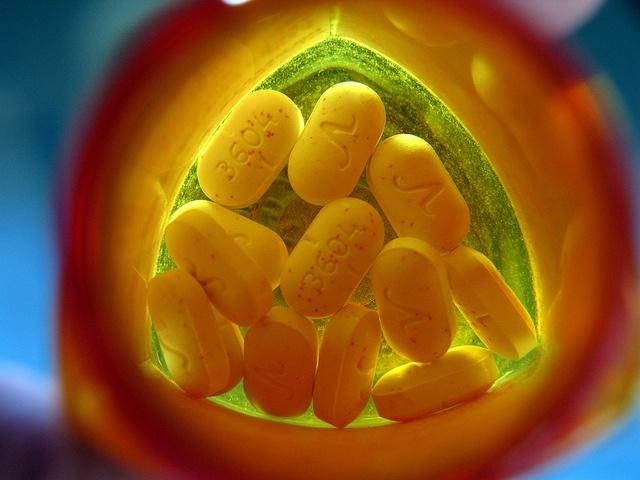

As the prescription opioid addiction crisis continues to explode, public health professionals are struggling to contain a problem that many feel has spun out of control.
According to the American Society of Addiction Medicine (ASAM), at least 50 people died of a prescription opioid overdose every day in 2014. Of the 21.5 million Americans over the age of 12 who had a substance abuse disorder that year, 1.9 million of them said they were addicted to prescription pain relievers such as methadone, oxycodone (OxyContin) and hydrocodone (Vicodin).
To offer the broad scope of the impact this has on American society: 18 Americans died in terrorist attacks on U.S. soil in 2014; another 32,675 died in automobile accidents; and over 47,000 citizens died of legal drug overdoses during the same year.
On any given day, over 1,000 Americans are treated in emergency rooms for opioid misuse. In addition to the pain inflicted on countless families and friends across the U.S., the Department of Health and Services (HHS) estimates that the annual cost of emergency room and inpatient care for opioid poisonings hovers around $20 billion. The total health and social cost, estimates HHS, is at least $55 billion a year.
The increase in opioid prescriptions over the past generation has a clear link to this addiction crisis. The U.S. Centers for Disease Control and Prevention (CDC) estimates that sales of prescription opioids quadrupled since 1999. An estimated 1 in 5 patients with pain or pain-related diagnoses unrelated to cancer contribute largely to the approximately 650,000 opioid prescriptions doled out daily across the U.S.
“What happened was that during the mid-1990s, we had a change of perspective in medicine,” said Marvin D. Seppala, M.D., chief medical officer of the Hazelden Betty Ford Foundation. “The profession became convinced that we could use these drugs safely for chronic pain, despite the evidence suggesting that was not so.”
Dr. Seppala pointed to a single paragraph in a letter to the editor published in the New England Journal of Medicine years ago, which appeared to suggest the risk of addiction from these drugs was low. Although the analysis mentioned in the letter actually did not posit such a conclusion, medical associations including the American Pain Foundation urged doctors to pay more attention to what they described as this “fifth vital sign.” The rest, they say, is history, as pharmaceutical companies began to introduce more powerful painkillers and armed themselves with a variety of dubious tactics to win doctors over.
Now that society is struggling mightily with opioids, who should take the lead and guide us out of this nightmare? Earlier this year, Dr. Sanjay Gupta of CNN insisted medical professionals must take a call to action and use far greater caution when advising their patients on pain medications.
Or should most of the burden be shouldered by drug companies? Their marketing collateral, aggressive sales representatives and success in winning over physicians arguably had a huge role in opioids’ shift from drugs rarely prescribed to a widely distributed form of treatment.
One drug company, long in the eye of the storm during this crisis and the focus of an extensive Los Angeles Times investigation, says it is doing exactly that.
Purdue Pharma, which has been in business for 124 years, insists it is “learning from the past while focusing on the future,” and is determined to be part of the solution to alleviating this ongoing health crisis.
“While our products represent approximately 2 percent of all opioid prescriptions, we’ve led the pharmaceutical industry in developing medications with abuse-deterrent properties, which the FDA, DEA and White House consider an important part of a comprehensive approach,” a Purdue Pharma spokesperson told TriplePundit.
According to Purdue Pharma, it was the first in its industry to advocate for the use of prescription drug monitoring programs. Several years ago, the company gave the National Association Boards of Pharmacy a $1 million grant to improve the technologies monitoring interstate prescription data. As a result, the company says more than 30 states now share this data, contributing to an important part of the national strategy to combat prescription opioid abuse.
In addition, Purdue Pharma says it is committed to working with the law enforcement community in order to bolster its resources in combating this epidemic. As a complement to drug monitoring programs, the company gave $350,000 earlier this year to launch a pilot program with the National Sheriffs’ Association to provide law enforcement with Naloxone, an opioid antagonist that can prevent an overdose in the event a police officer becomes involved in such a situation. First responders, however, charge that the growing use of this drug, which is highly effective in preventing death from overdoses, has caused a spike in price.
Finally, Purdue says it supports the CDC’s guidelines covering how opioids are prescribed to treat pain. On that point, the company claims it has written to clinicians and encouraged them to become familiar with the recommendations and therefore make such prescribing decisions using far more caution.
At face value, efforts by companies such as Purdue Pharma demonstrate that the industry is taking this tragedy seriously. Nevertheless, Dr. Seppala suggests more caution, mixed with compassion, is needed if doctors -- hopefully with the support from drug companies -- are going to be smart about managing opioid prescriptions.
“We need opioids in medicine, as they can work effectively for severe pain,” Dr. Seppala said. “They are crucial for pain relief, for acute pain like a broken leg, or post-surgery. But if prescribed, they should only be taken for a few days.”
To that end, the CDC is urging doctors to recommend other treatments for chronic pain, such as non-opioid medications or physical therapy. But Dr. Seppala did not seem confident that drug companies would follow the CDC’s lead. “They are not interested in telling people that these [drugs] should generally not be used for chronic pain -- and that puts too many patients at risk,” he said.
As a result, pharmaceutical companies often conduct themselves analogously to energy companies, which sold their products for years while leaving it up to the public sector to pay for the environmental cleanup. Drug firms profited handsomely from opioids, but society at large was left to cope with the costs of healthcare emergencies and addiction treatment.
The efforts of companies such as Purdue Pharma are a positive start to helping Americans who struggle with addition and repairing the industry’s reputation. But considering that much of America is struggling with an epidemic that has become even more complicated with the emergence of more potent drugs such as fentanyl, the funding of these pilot programs so far is akin to taking a butter knife into an AK-47 fight.
Image credit: Dream Weaver/Flickr
The Next Billion-Dollar Idea Will Not Come from Silicon Valley


Ross Baird is many things those advocating for diversity in the tech and venture capital industries rally against: He’s white, male and heads up a multimillion-dollar investment firm. He also happens to be leading the charge to extend funding to diverse founders far outside of Silicon Valley, where too often neglected but promising cities are burgeoning with lively startup ecosystems.
The 30-something founder and CEO of DC-based social impact investing firm Village Capital spent the last seven years investing in founders who are solving real-world problems. Over the course of Village Capital’s history, the firm provided seed-funding to over 60 companies around the world that went on to raise an additional $80 million in capital. Of those portfolio companies, 40 percent are led by a female founder and 23 percent are led by a founder of color. Village Capital also maintains an impressive roster of partnerships with companies like PayPal, the Kapor Center for Social Impact and AOL Founder Steve Case’s Revolution venture firm.
Despite an already strong track record of success, Baird and his team are just getting started.
At the crux of Village Capital’s work is a strong belief that the next great billion-dollar idea won't come from go-to hubs for innovation like San Francisco, New York or Washington D.C. Instead, Baird’s betting on the rise of entrepreneurs in overlooked markets overflowing with talent and opportunity — the type of people who just might hold the solutions cities seek to solve some of their most pressing challenges like unemployment, poverty and high resource costs. They just need access to capital and supportive business environments to realize their goals.
“If you look at the numbers, 78 percent of startup investment in the U.S. and nearly 50 percent of startup investment in the world goes to just three U.S. states: New York, Massachusetts and California. About 5 percent of startup investment goes to women, and less than 1 percent of startup investment in the U.S. goes to people of color,” Baird told Next Billion.Where public, private and nonprofit work to spur entrepreneurship has too often existed in fragmented silos, Baird and his team continue to spearhead efforts to foster collaboration, round out resources, and incubate discussions on meeting the various needs entrepreneurs have when launching and growing a business in their respective cities.
Village Capital’s approach to this work isn’t always traditional, meaning the firm experiments quite often outside of the incubator/accelerator model to which many cities turn as their only answer to building a local startup community.
Instead, Baird’s team challenges the narrative of what constitutes the makings of a viable startup community by pushing business and policy leaders to zero-in on what their cities do best and leverage unique opportunities to engage with entrepreneurs in those spaces.
Take for instance Village Capital’s recent initiative in collaboration with Gov. Terry Mcauliffe's five-day, five-city Virginia Velocity Tour. Positioned as a pitch competition, entrepreneurs across the Commonwealth vied for a shot to win a piece of the $125,000 in total funding grants. The tour, which kicked off in late September, was hosted on a souped-up bus where investors, entrepreneurs and city leaders participated in lengthy discussions on the present state of entrepreneurship in their communities. Sector area focus highlighted industry specialties in biotech, health, energy, agriculture and cyber security.
Journeying across the cities of Roanoke, Richmond, Hampton Roads, Northern Virginia and Charlottesville, competing entrepreneurs in each daily cohort got a high-level snapshot at regional strengths, access to public officials and insights on local programming that would be helpful for their businesses.
For example, Lawrence Wilder Jr., advisor on social entrepreneurship for the state of Virginia, detailed information on a tax credit the state offers for investors that provide equity funding to eligible small businesses. The program, now seven years old, has been severely underutilized, Wilder said. Similar programs exist in Louisiana and New Jersey.
Following Village Capital’s lead to close the ecosystem gaps could mean that opportunities such as these aren’t fumbled. Wilder said his office is looking at additional solutions to connect entrepreneurs to local assets and help boost job growth, training and other positive economic outcomes across the state. What this particular portal will look like remains unseen.
Overall, Baird continues to rally in favor of cities creating their own identity for entrepreneurship by working together to strengthen synergies between their assets and invest in diverse entrepreneurs solving worthy problems.
In a recent article, while penning his thoughts on diversity and inclusion for the Kauffman Foundation, Baird wrote:
“[...] We see the more cities seek to expand the access to capital, talent, and resources to founders who the market is undervaluing, the more potential they have to come up with redefining breakthroughs that revolutionize entrepreneurship. This, in turn, helps create the more prosperous and inclusive economy we are all striving toward.”
Images courtesy of Village Capital
Global Commitment on Refrigerant Reduction Will Change Global Warming Trajectory


The global climate agreement reached last year in Paris got a tremendous amount of coverage, as it well deserved. It was certainly a historic moment and keeps alive the possibility that we can continue to reduce emissions and stave off the worst of what this climate crisis could potentially bring.
Another agreement, signed last week, received far less attention, though it could by some estimates have an impact even greater than COP21 and the resulting Paris agreement.
Last week in Kigali, Rwanda, more than 170 countries pledged to cut back their use of hydrofluorocarbon (HFC) refrigerants. These gases, while far less widely emitted than carbon dioxide, have an impact that is up to 1,000 times greater on a pound-for-pound basis.
Given that the Earth is warming and more people are rising out of poverty, it is expected that the number of air conditioners and refrigerators will continue to grow rapidly — making the issue all the more urgent.
The Institute for Governance and Sustainable Development estimates that eliminating these gases as quickly as possible can help to limit warming by as much as half a degree Celsius. This was confirmed by a study published in Atmospheric Chemistry and Physics.
These gases are used in a fairly limited way -- as refrigerants for air conditioners and refrigerators -- and are produced in a relatively small number of locations (unlike CO2 which comes out of every tailpipe, chimney, campfire, etc.). So, it should be far easier to cut back. That is, of course, provided there is an agreement to do so, which is now on the books.
Ironically, commitments on HFCs came about as the result of the 1987 Montreal Protocol, a highly successful effort to cut back on the previous generation of refrigerants, known as CFCs, due to their damaging impact on the ozone layer. HFCs were chosen because they do not destroy ozone. However, at that time climate change was not yet on the public radar, so the impact of HFCs on global warming was not considered.
Unlike the Paris agreement on CO2 -- which has many more complex and far-reaching consequences that drive deep into the roots of our economy, directly impacting critical choices over how we produce electricity and what we use to propel our cars -- this agreement merely requires upgrading this rather sizable class of equipment with a safe and suitable replacement for HFCs.
Alternatives already exist. The EPA already approved three: propane, isobutane and a chemical known as R-441A (a hydrocarbon blend also known as HCR188C) for use as refrigerants. Now all that remains are for manufacturers to begin selling equipment that utilizes these alternatives (some models are already on the market) and wait for the inventory to turn over.
That, of course, is easier said than done -- especially in poor countries, where families may have spent a large portion of their total worth on an air conditioner they aren't in any hurry to replace. Then there are the smaller manufacturers that may find the cost of retooling a major burden.
That’s why the agreement ended up with a three-tiered structure, in an effort to make it fair to all parties. The Kigali accord is technically an amendment to the Montreal Protocol, which means that, unlike the Paris agreement, it maintains the legal force of a treaty.
As part of the agreement, the U.S. and other developed countries in the EU will commit to freezing production of HFCs by 2018, and then manage emissions down to 15 percent of 2012 levels by 2036. The other participants will be given even more time. Most of the rest of the world, including China, Africa and Brazil, will have until 2024 to freeze HFC use, reducing it to 20 percent of 2021 levels by 2045.
Finally, a few of the world’s hottest countries, including India, Pakistan, Iran, Saudi Arabia and Kuwait, will have until 2028 to discontinue production, which should get them down to 15 percent of 2025 levels by 2047.
One can imagine, as each of these deadlines is reached, a good number of now-obsolete air conditioners being shipped off to other countries that have another six to 10 years to comply.
But the good news is that the world reached an agreement. Of course, scientists wanted it to be stronger. But that should not overshadow the significance of the agreement. Sierra Club president Michael Brune summed it up well:
"This landmark accomplishment to limit potent greenhouse gases is one of the most significant steps the international community has taken to curb the climate crisis. By working together, more than 150 countries have committed to action that can change the trajectory of warming on our planet by avoiding a half degree Celsius in temperature increases.”
Image credit: Jan Tik: Flickr Creative Commons
Responding to Food Safety Concerns, Walmart Invests $25 Million in China


Walmart pegs its future growth on the sales from stores in China, but glimpses into those outlets’ recent financial performance suggests such hopes are disappearing.
Much of Walmart’s struggles can be attributed to China’s cooling economy and fickle consumers who found that Walmart’s offerings did not necessarily match their tastes. But food contamination scandals, such as the 2011 pork mislabeling fiasco and the tainted donkey meat scare that rocked the company almost three years ago, significantly contribute to the challenges the world’s largest retailer confronts in the world’s most populous country.
To that end, Walmart announced this week that it will invest at least $25 million in food safety research. The retailer promised to revamp its supply chain while assuring nervous customers that its food products are safe.
The company’s corporate headquarters and its foundation, along with IBM and Beijing’s Tsinghua University, will partner together to improve food authentication systems and the tracking of the company’s supply chain. Much of the focus will be on the safety of poultry, 12.7 million tons of which are expected to be consumed in China this year, trailing only pork as the nation’s most popular source of animal protein.
Key to the securing of Walmart's food supplies is the use of blockchain, an automated database system that digitally tracks food items from farmers to food processors, distributors and eventually store shelves. With blockchain, supply chain managers can seamlessly track everything remotely in a ledger, from expiration dates to warehouse temperatures – and such technology is designed so that it is nearly impossible to alter.
This program will be monitored by staff at the new Walmart Food Safety Collaboration Center in Beijing, where they will be joined by researchers from the University of Arkansas. In addition to the supply chain technology investment, staff at this center will also research food-borne contaminants, as well as develop a food safety risk assessment model that will eventually be available to other companies and organizations worldwide. The staff will also test new technologies that can improve poultry safety across China.
Walmart really had no choice but to ramp up its spending on food safety measures, as the country’s government implemented stricter food inspection and safety measures last fall.
This commitment builds upon Walmart’s spending on food safety in China, which after the donkey meat scandal, reportedly tripled to almost $50 million by 2015. The combined amount of money Walmart spent on food safety is not huge when one considers the size of China’s grocery market and its fierce competitiveness. Estimates suggest China’s total grocery sector is worth an estimated $1 trillion to $1.6 trillion, and Walmart faces plenty of rivals including Tesco, Carrefour, Bailan and Wumart. Add the increasing popularity of e-commerce in China, and Walmart has a long road ahead if it is going to regain the trust of Chinese consumers in a challenging economic climate.
Image credit: DCMaster/Flickr
How NGOs Can Increase Impact by Aligning Their Finances with Their Mission
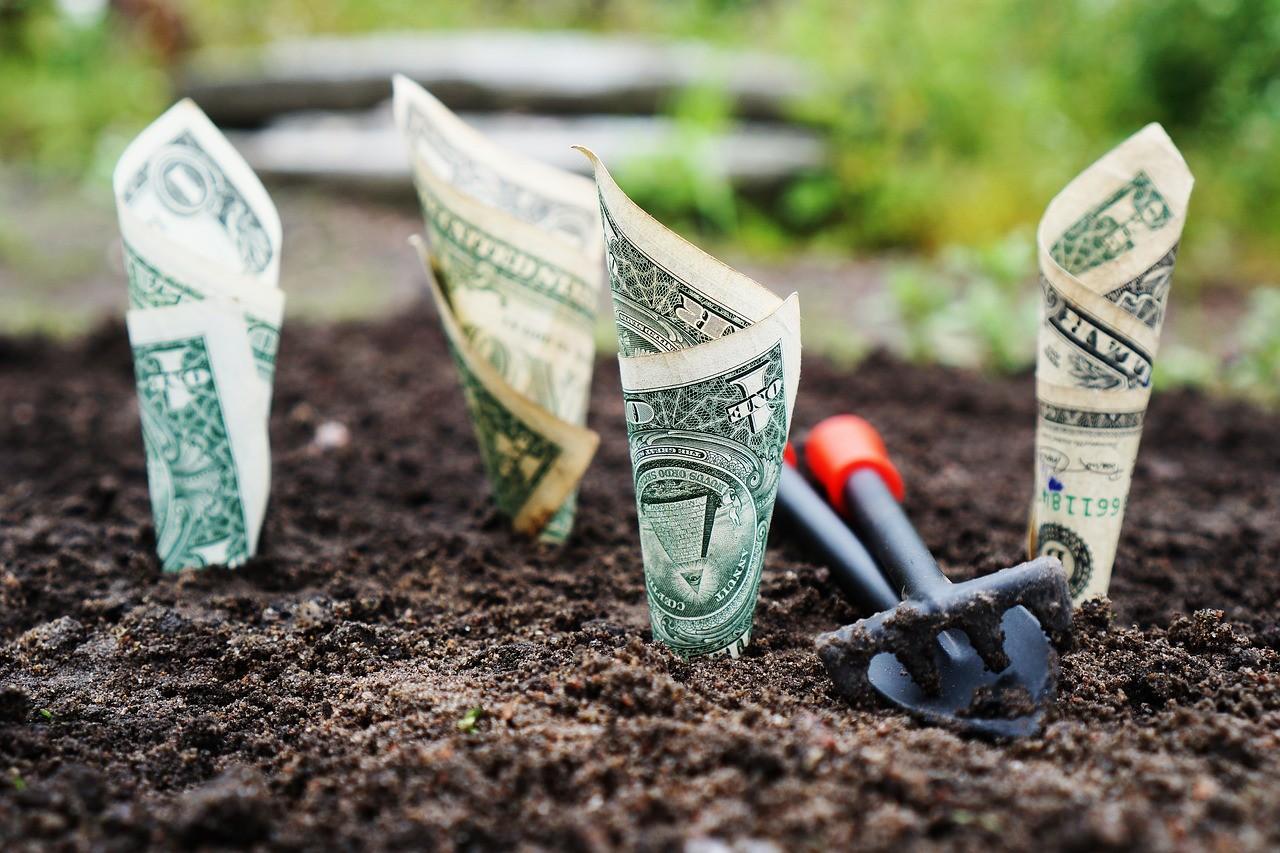

By Joshua Levin
As a nonprofit employee or executive, imagine finding out your organization holds investments that work against the impact you're trying so hard to achieve.
Many NGOs are discovering that this may not be far from the truth. Standard investment portfolios finance the business activities of fossil fuel companies, weapons manufacturers, private prisons, deforestation – this list goes on. Alternatively, what if you could align your institution’s investments with your mission, and even your campaigns, smartly wielding investment as a force to further your cause and your financial goals?
This is not a fantasy, but a revolution in socially responsible investing that’s already here. By looking at a few of the challenges and successes experienced by nonprofits walking this journey, we can learn lessons on how to expand our impact through finance.
First, a clear example of the challenge: I recently spoke with the board member of a foundation – in this case, who wishes to remain anonymous - that focuses on prisoner, worker and immigrant rights. The foundation donated around $50,000 to an immigrant rights organization, only to discover that its endowment simultaneously holds nearly $75,000 worth of shares in the parent company of the detention center against which it's advocating! Similarly, a roughly $25,000 grant to support labor organizing at a local factory was outweighed by an equity stake nearly four times greater in the factory’s holding company. These discoveries were upsetting to say the least and raised questions around the efficacy of grant-making done in isolation from the endowment.
Yet even obtaining this information took months of wrangling from the foundation's money manager, who subsequently insisted that making changes would be difficult and hurt financial returns. These claims ring false. The real issue is that most asset managers make their fees by putting everyone into the same portfolios regardless of their clients' true objectives; they simply don’t want to spend time customizing for "small" pots of money.
Unfortunately, these advisers are behind the times. Over 2,000 research studies, spanning 40 years of data, show that more sustainable companies tend to meet or outperform their peers. Simply put, as society makes progress on the causes we are fighting for – e.g. abandoning coal-fired energy or private prisons – the bad actors tend to lose. Why should you lose along with them?
Friends of the Earth (FOE) took a different approach. A leading environmental organization founded in 1969, FOE is deeply familiar with the power of finance to shape industry behavior. Says Michelle Chan, VP of programs: “We have been doing sustainable finance work for a long time. It really started in the 1980s, when we focused on World Bank reform. Then we engaged Export Credit Agencies. In the ‘90s, we began to work more with Wall Street Banks and the socially responsible investment (SRI) community.”
In recent years, FOE started to build up its financial reserves, and the organization wanted to put these to work in a way that enhanced it programs. FOE was fortunate to be starting from a blank slate. It crafted a request for proposal (RFP) with an extensive set of exclusions – from industrial agriculture to military contractors to mining – and ultimately sourced a provider that would fulfill all of its provisions. “The whole process took about six months,” Chan says.
“It was worth it,” adds Jeff Conant, FOE’s senior international forests program manager. “In the end I think we did a pretty good job as an organization, building a portfolio we can be proud of.”
A remaining challenge for FOE is ensuring ongoing alignment. As Chan states: “One of the ‘lazy’ assumptions of the model is that our screens are being followed. Yet with any kind of policy that you give to a money manager, unless you’re doing pure sector exclusions, there is still a judgment call. So some bad performers can get through.” The onus remains on the organization to keep its financial managers accountable.
In another example, the Heron Foundation made waves in 2012 when it decided to go “all in” on impact and socially responsible investing. Heron looked to its US$300 million endowment as an engine to help drive its strategy of economic development and poverty alleviation. Says Kate Starr, then CIO who managed much of the transition: “Once we understood the full meaning of fiduciary duty as applied to nonprofit organizations, moving to 100 percent brought us much closer to delivering on our mission.”
This sounds lofty, but the key was just to get started. “There were some easy moves we could take in the short run, like running screens on our large-cap equity exposure,” Starr says, “even as we looked for opportunities to make longer term, less liquid investments.”
Starr says the biggest challenge for Heron was getting transparency into everything the foundation owned: “Stocks, bonds, loans to nonprofit organizations, cash deposits – over 7,000 separate securities! It highlighted for us how difficult it is to find the right combination of social and financial information to assess how well the portfolio lives up to a foundation’s goals.”
Fortunately, since Heron’s transition, a growing suite of free tools has emerged to help simplify the process. OpenInvest offers the Portfolio Lens tool, which gives quick transparency into some of the most common portfolios. For a deep dive into specific issues across thousands of funds, FOE and AsYouSow offer the DeforestationFreeFunds tool, and AsYouSow offers its FossilFreeFunds with recently added carbon footprinting.
Finding a solution for a retirement plan can be a bit more complicated. 403(b)/401(k) plans often come with a set menu of investment options for employees. At WWF, where I spent the last six years, as well as at many NGOs, there are some “green” funds on this list. Yet they often include high management fees and spotty performance. Even worse, as profiled in this recent Bloomberg article and other media, it can be disappointing to look under the hood at the funds’ holdings.
At FOE, the approach for employee accounts is to exclude all funds with large oil holdings, and to default employer contributions into those that are tobacco-free. “We wanted to default employees into age-targeted full SRI funds, but amazingly, these don’t exist.” Nonetheless, retirement plan choices are available that offer some alignment with employee and organizational values. And the more employers request them, the more options will emerge.
Individual NGO employees also invest outside their employer. As mission-driven people, there’s no reason they shouldn’t practice sustainable investing. Indeed, this is often the easiest place to start, and SRI makes an impact. To implement, the company I co-founded, OpenInvest, makes socially responsible investing easy and affordable for both individuals and organizations. There are also green ETFs that can provide SRI portfolios at low cost.
Simply put, there are no longer any technological, cost, or performance barriers to adopting socially responsible investing. NGO leaders should chart the path -- at the institutional level, in their employee retirement accounts, and as ethical individuals.
Just as we increasingly demand that corporations account for and mitigate Scope 3 (value chain) impacts, we too should expect more of our service providers – especially financial service providers that also define the incentives that shape industry. In so doing, we discover a powerful new tool for magnifying our impact that has been on our shelf all along.
Image credit: Pixabay
Joshua Levin is a Co-Founder and Chief Strategy Officer at OpenInvest, a YCombinator-backed investment adviser dedicated to using technology to mainstream sustainable investing. He previously spent six years at WWF, where he managed the Commodities Finance Program, and has otherwise worked with the Rainforest Alliance, Root Capital, Conservation International in various capacities. He lives with his wife and two sons in Berkeley, CA.
You can reach josh at [email protected] and follow on Twitter @openinvestco
Los Angeles to Go Zero Waste by 2050
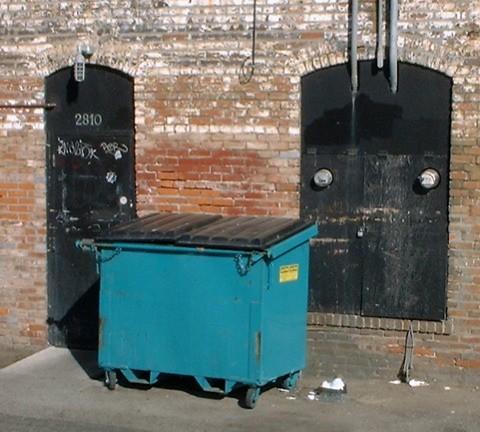

The nation’s second most populous city, Los Angeles, has a lofty goal of achieving zero waste by 2050. The Los Angeles Board of Public Works brought the California city closer to its goal by approving a contract the end of September that will overhaul its waste collection.
The $3.5 billion waste hauling contract will split the city into 11 franchise zones served by seven waste haulers. Under the contract, the franchise holders are required to collectively reduce solid waste disposal by 1 million tons a year by 2025. The franchise rights last 10 years and will take effect in July 2017. The contracts also include over "$200 million in investment in recycling and materials handling infrastructure.” Other goals include the reduction of greenhouse gas emissions and food waste.
Under the current waste collection system in Los Angeles, about 144 private haulers collect waste from multifamily and commercial sites. It is an inefficient system.
In April 2014, Mayor Eric Garcetti and the Los Angeles City Council approved an ordinance that allowed for the establishment of an exclusive franchise system. Called the Zero Waste LA franchise policy, it will transform the city’s waste and recycling system for apartments and businesses. And it makes Los Angeles the “first and largest city nationally to adopt a robust plan to move toward zero waste,” says the Don’t Waste LA coalition. For over four years, the coalition made up of over 35 environmental organizations conducted researched and advocated for a better waste collection system.
Waste is a big problem in Los Angeles, as it is in every American city and town. Over 1 million tons of food scraps and yard trimmings are thrown away by Los Angeles residents every year. The new system requires organics collection and composting to be expanded, which will reduce methane, a GHG with a warming potential 23 times that of carbon. It will create up to 2,000 jobs, and improve the lives of more than 6,000 workers who handle and sort the city’s waste, officials said.
One of the top 10 most dangerous industries is sorting waste. And that's why the new system includes a certification program to review facilities’ operations and legal compliance. It also has the potential to expand careers in the recycling sector over the next decade.
Making waste collection more environmentally friendly includes the vehicles that collect the trash. The estimated 800 diesel trucks now used by haulers to collect trash will be swapped with clean fuel fleets, reducing up to 94 percent of particulate matter air pollution. This is good news because Los Angeles is one of the top cities for air pollution, according to the American Lung Association’s 2016 State of the Air report.
It's also worth noting that Los Angeles County has limited landfill space, a 2015 report by the Los Angeles Alliance for a New Economy (LAANE) pointed out. The county’s landfills could run out of space “as early as 2016,” according to the report. In 2012, the county sent 8.6 million tons of waste to landfills. All that waste sent to landfill comes with a high environmental price. The waste sector is the county’s third largest contributor to GHG emissions, and organic waste sent to landfills is “a major cause.”
Bucking this trend, Los Angeles seeks to serve as a model for other cities. New York City Mayor Bill de Blasio also proposed a reform of the city’s commercial waste collection services, which is similar to that of Los Angeles’ new system. It would divide commercial waste collection into several geographic zones and private waste haulers would be selected for each zone.
Considering the impacts of climate change, which experts say range from increased and more severe natural disasters such as hurricanes to prolonged drought, it's time for widespread reform of waste collection in the U.S.
Image credit: Flickr/Dave Wright
Despite Economic Benefits of Climate Change Adaptation, FL Senate Hopeful Remains Strident Climate Denier
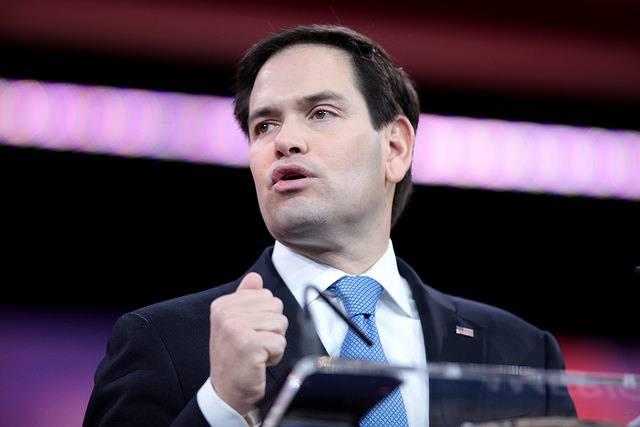

A year ago, Marco Rubio of Florida was a leading contender for this year’s Republican presidential nomination. While he was confident in his chances, in the end he lost his home state’s primary badly to the current nominee. He's trying to get his old Senate seat back and is maintaining a slim-yet-steady lead over his Democratic opponent, Patrick Murphy.
However, Florida -- the U.S. state that is arguably the most susceptible to sea-level rise in the long term -- will win little if Rubio successfully punches his ticket to another six years in the Senate.
Rubio has a longstanding reputation as one of the most vocal climate deniers in Washington, D.C. Past interview questions about the age of the Earth or his stance on climate change were often met with outright ignorance, with replies such as, “I’m not a scientist, man.” His refusal, or outright ignorance, to acknowledge climate change risks flies in the face of overwhelming evidence of the impact of sea-level rise on his home state. The high-water mark in his home base of Miami increases at a rate of one inch per year. And it is widely accepted as fact that Florida will confront more expensive flood risks than any other U.S. state in the years to come. The state's tourism industry, which contributes at least $75 billion annually to the state's economy, also faces significant threats do to sea-level rise and more volatile climate.
Rubio’s ongoing refusal to acknowledge climate change risks, despite the recent damage Florida suffered due to Hurricane Matthew, continues to slow the state's clean-energy sector, despite the its abundant sunshine. A decade ago Rubio was “bullish” on renewables, saying he believed they were key to Florida’s ability to generate electricity for a rapidly growing population. Even before the Iowa caucuses earlier this year, he claimed the U.S. needed to be "No. 1 in renewables.” But the truth is that Rubio’s reelection campaign, which scored millions of dollars from out-of-state donors, is also one of the largest recipients of money from oil and gas companies.
Meanwhile, Rubio has not taken a stand on the controversial Amendment 1 referendum to be decided by Florida voters next month. That initiative, which is backed by the state’s utilities, purports to expand access to solar energy. But the truth is that it would ban citizens who own solar power systems from selling excess electricity back to the grid. Hence the Sunshine State would be one of only five U.S. states that prohibit net metering.
Furthermore, although the solar industry is one of the fastest growing sectors in the U.S. -- employing more people than oil rigs and natural gas fields -- Rubio continues to insist any policies focused on reducing carbon emissions are bad for the state’s economy.
But what poses a greater risk for the state’s future economy is the unbridled development on its coasts. Investment in infrastructure that would mitigate risks from sea-level rise would create more jobs while minimizing damage from future weather-related disasters, but the state’s current leadership avoids any talk of such long-term planning. Hence Florida struggles with a bevy of ongoing water pollution problems, on which Rubio repeatedly blames President Barack Obama – even though it is clear the state’s junior senator has shown little understanding about how his home state stumbled into this mess.
The result is that Floridians will continue to pay high rates to insurance companies, which in turn will only continue to spike in price: One study suggested over $150 billion worth of real estate properties will be below local high tide levels by 2050. But as long as state leaders such as Rubio stamp out all constructive debate over how Florida can build for 21st-century realities, watch for the state to endure more financial losses due to extreme weather – and a collective eye-roll from a federal government that will be asked to pay for those damages.
Image credit: Gage Skidmore/Flickr
Twitter Chat Recap: #BLMandBeyond with Symantec, Ben & Jerry’s and Net Impact


Today, Symantec, Ben & Jerry’s, Net Impact and TriplePundit discussed the corporate response to racism and social inequality in America at #BLMandBeyond!
Racial tension in America is at a high unseen in decades. While the call for equality comes from the highest ranks, there’s a social and political revolution underway. There is no doubt that it’s on the minds of most employees when they come to the office.
In this Twitter chat we examined how companies should respond to national controversies like police violence and the Black Lives Matter movement to best support employees. We also discussed how companies can work to improve equality by increasing diversity in their ranks directly.
TriplePundit teamed up with Symantec to offer this Twitter chat as a learning opportunity for all, including ourselves!
During #BLMandBeyond, discussed the following and much more:
- Should ethically-minded companies do something regarding the #BlackLivesMatter movement?
- What does it mean to be an “active ally?”
- How can we best support employees of color during times of societal strife?
- Does systemic racism belong in corporate sustainability reports?
- Are Diversity + Inclusion numbers HR’s responsibility or does the the responsibility lie in the C-suite?
This Twitter chat accompanies our ongoing series on the Black Lives Matter movement.
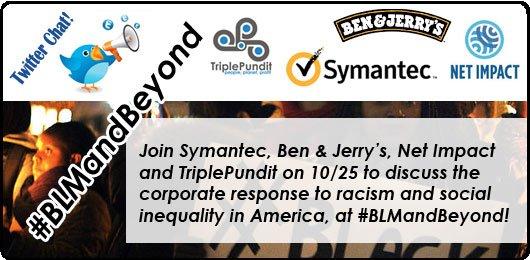
FEATURED GUESTS:
- Cecily Joseph (@CecilyJosephCR) - VP of Corporate Responsibility, Symantec
- Chris Miller (@cmwdc) - Social Mission Activism Manager, Ben & Jerry’s
- Liz Maw (@LizMaw) - CEO, Net Impact
MODERATORS:
- TriplePundit Team
-
- Nick Aster (@NickAster) -- Founder and Publisher
- Marissa Rosen (@MarissaR1) -- Director of Social Media
- Jen Boynton (@JenBoynton) -- Editor-In-Chief
---
About Symantec
Founded in 1982, Symantec has evolved to become the global leader in cyber security, with more than 11,000 employees in more than 35 countries. Operating one of the world’s largest cyber intelligence networks, Symantec sees threats, and protects customers from the next generation of attacks. Symantec helps companies, governments and individuals secure their most important data wherever it lives.
About Ben & Jerry’s
From a renovated gas station in Burlington, Vermont, to far-off places with names we sometimes mispronounce, the journey that began in 1978 with 2 guys and the ice cream business they built is as legendary as the ice cream is euphoric. Now, the company works to preserve, protect, and expand Ben & Jerry's social mission, brand integrity and product quality, by providing mindful insight and guidance to ensure its making the best ice cream possible in the best way possible.
About Net Impact
Net Impact mobilizes the next generations to use their skills and careers to make a positive impact on the world. Net Impact is a global community of students and professionals who aspire to be effective drivers of social and environmental change. Its programs—delivered from its headquarters, as well as globally through our student and professional chapters—give its members the skills, experiences and connections that will allow them to have the greatest impact now and throughout their careers. Over 100,000 strong, Net Impact takes on social challenges, protects the environment, invents new products and orients business toward the greater good.
Image credit: Courtney Hobbs/Unsplash
PM wants UK to lead global fight against human trafficking

